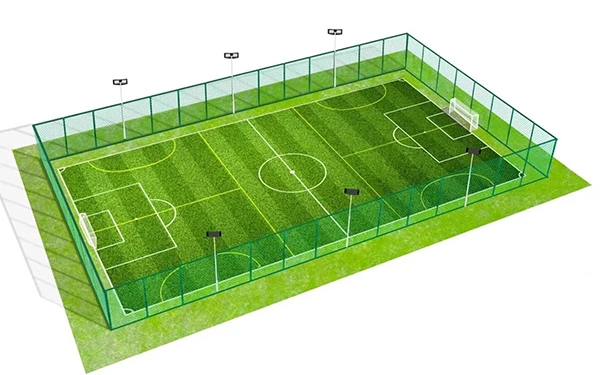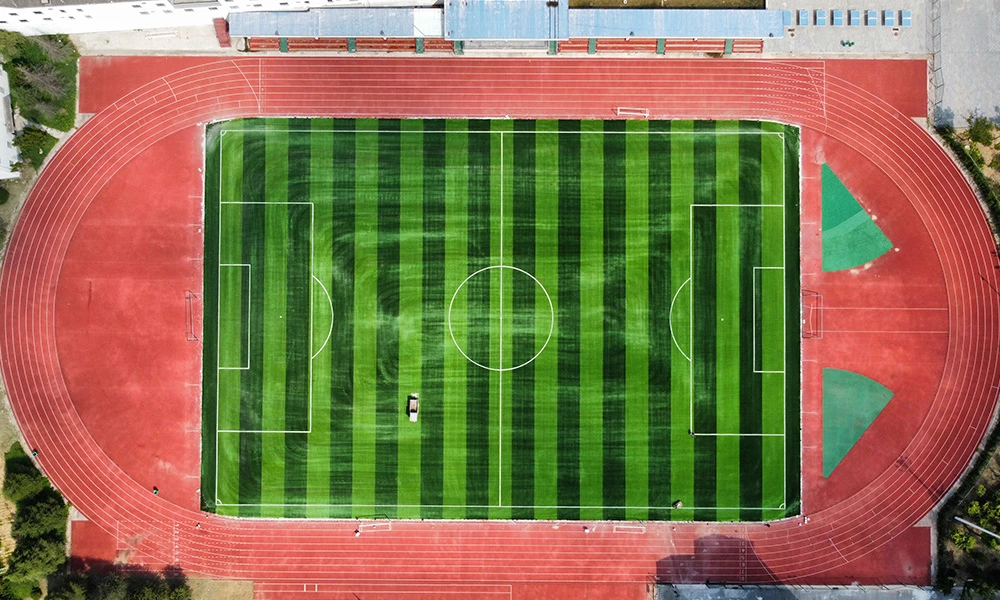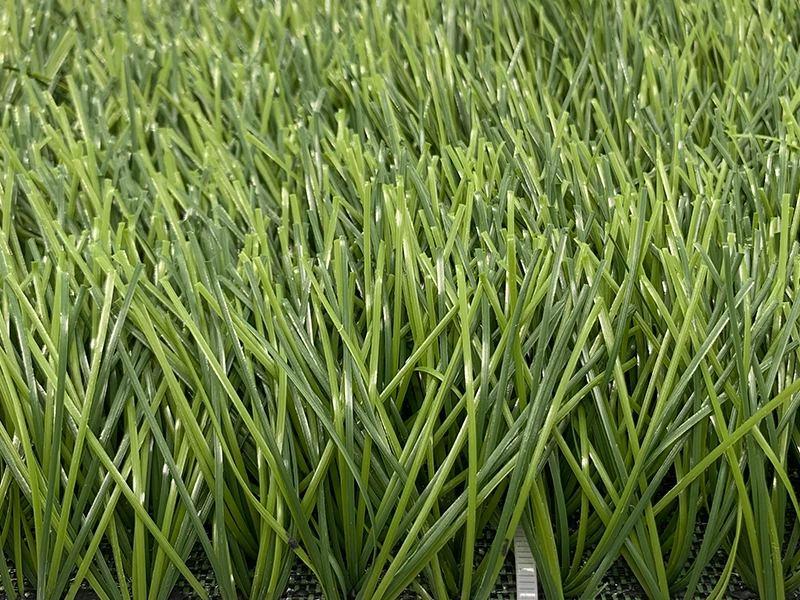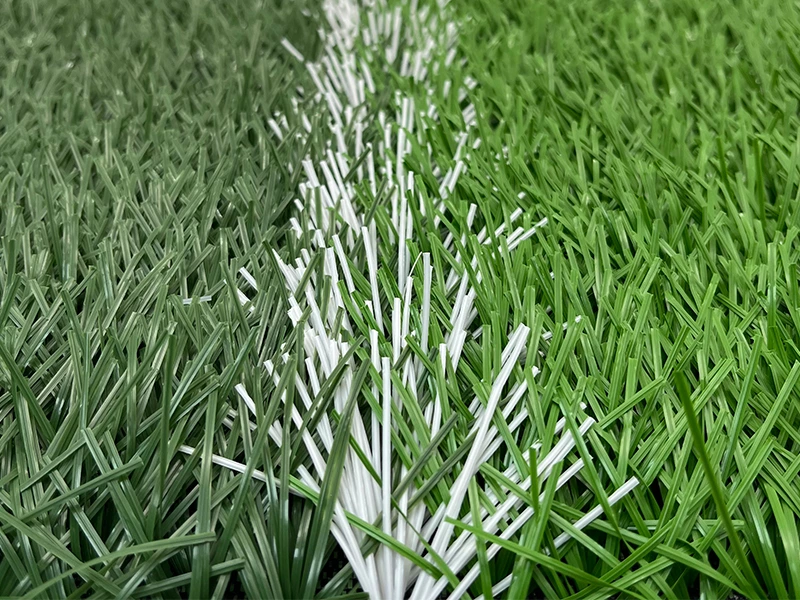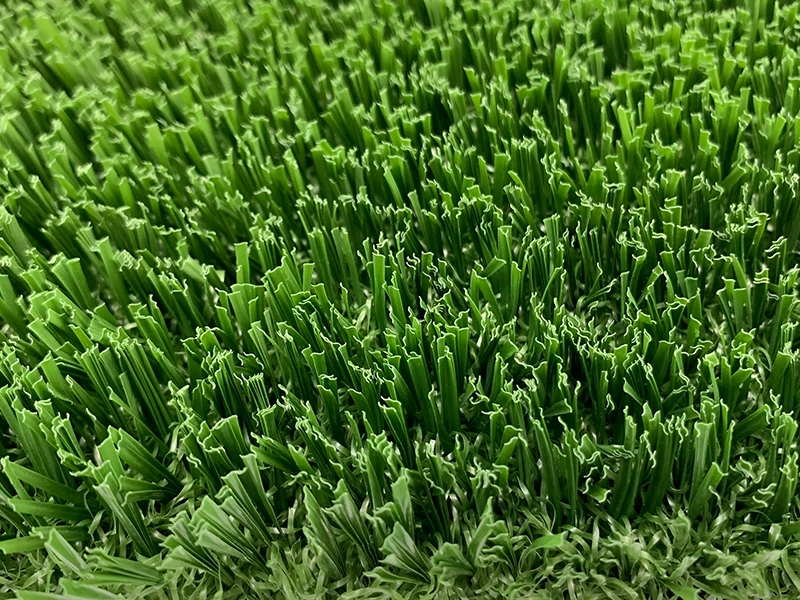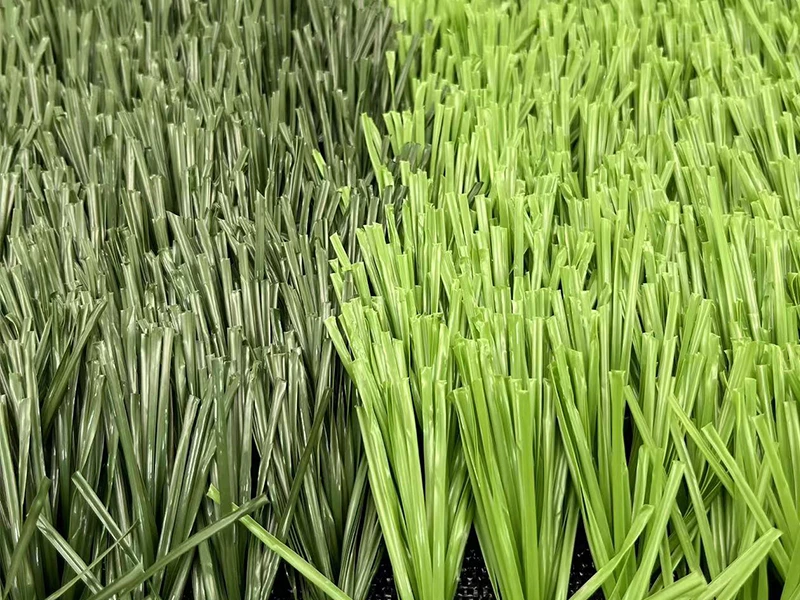Artificial grass football field: Materials and Construction
Overview of artificial turf for football field
Artificial turf for football field is a synthetic turf specially designed for football, which has the advantages of green environmental protection, durability, wear resistance and all-weather use. Compared with natural grass, artificial turf is not affected by weather, can maintain good sports performance in any climate conditions, and reduce maintenance costs. The elasticity and wear resistance of artificial turf can effectively reduce the risk of injury to athletes, while ensuring the stability and consistency of the game.
Artificial turf for football field is mainly divided into sand-filled type and non-sand-filled type. Sand-filled artificial turf usually uses longer grass fibers (about 50mm), and quartz sand and rubber particles need to be filled during the installation process to provide good support and cushioning, so that the rolling and bouncing of the football are closer to natural grass. Non-sand-filled artificial turf uses shorter grass fibers (generally about 30mm), the grass fiber structure is relatively straight or curved and has a higher density, and good sports effects can be achieved without filling. This type of turf is suitable for five-a-side football fields, indoor football fields and some special venues.
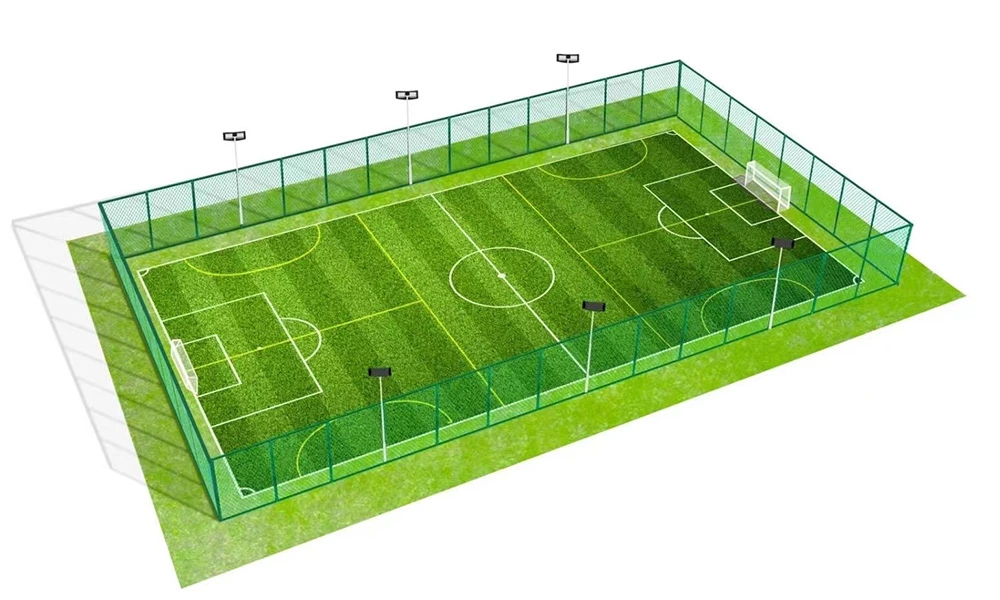
Materials and specifications of artificial turf football fields
The material selection of artificial turf football fields is crucial to their durability and sports performance. The following are common materials and specifications:
Turf type: Artificial turf for football fields is usually made of high-quality synthetic fibers, mainly polyethylene (PE) and polypropylene (PP) grass fibers. Polyethylene is softer and feels close to natural grass, suitable for professional competition venues, while polypropylene is more wear-resistant and suitable for training grounds and high-frequency use venues. In addition, the base fabric material usually uses polypropylene (PP) or polyvinyl chloride (PVC) to ensure the stability and durability of the lawn.
Grass weight: The grass weight per square meter (DTEX) is between 8800-14000DTEX. The higher the DTEX value, the greater the grass density and the stronger the wear resistance, which is suitable for professional football fields.
Grass color: The standard color of artificial turf is generally dark green to simulate the real visual effect of natural grass, but light green or two-color mixture can also be selected to enhance the natural feel.
Base material thickness: generally 2-3mm, the base material uses environmentally friendly rubber or PU (polyurethane) coating, with excellent elasticity and weather resistance, ensuring the comfort and safety of players during exercise.
Size: The standard artificial turf for a football field is usually 4 meters wide and 25 meters long. Larger or smaller turf rolls can be customized according to the actual size of the field to reduce seams and improve installation stability.
Construction and installation of artificial turf football field
Construction and installation are important factors affecting the service life and performance of artificial turf in football fields, and usually include the following steps:
Site foundation preparation: Ensure that the ground is flat, dry and solid. The base layer can be made of asphalt or concrete to ensure good drainage performance.
Turf paving: Cut and lay the artificial turf according to the size of the field to avoid too many seams that affect the appearance and durability.
Bonding and fixing: Use professional glue and connecting tape to fix the turf joints to ensure the integrity of the turf.
Filling with rubber particles (only for sand-filled lawns): Quartz sand and rubber particles are evenly filled in a standard ratio to keep the grass upright and provide good cushioning.
Rolling finishing: Use professional equipment to compact and comb to evenly distribute the filling particles to improve the stability and performance of the lawn.
The entire construction period is usually 5-10 days, depending on the size and complexity of the site. During the construction process, it is necessary to ensure that all materials meet environmental standards and are completed by a professional construction team to ensure the quality and service life of the site.
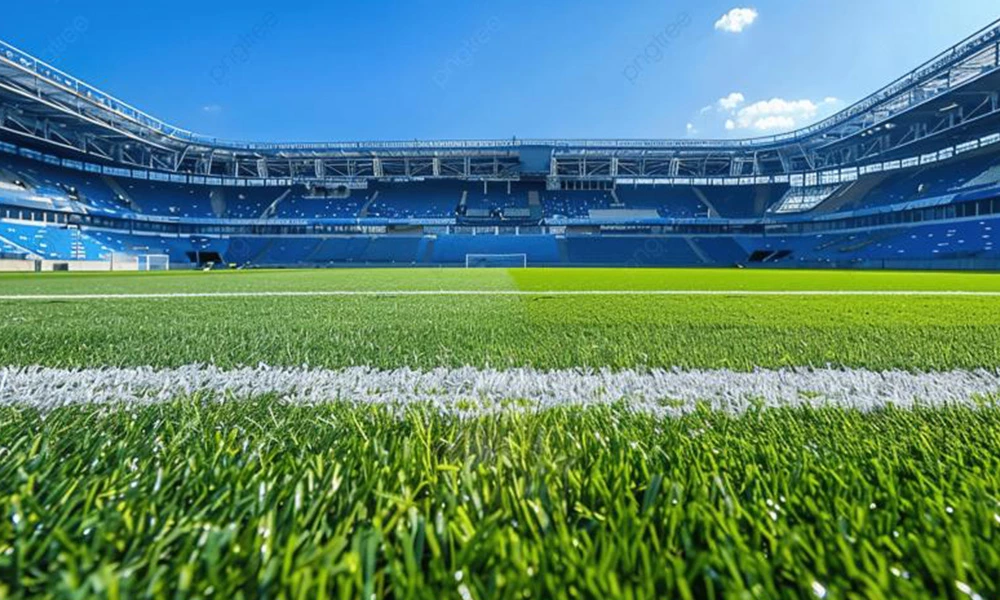
Artificial turf football field maintenance
The daily maintenance of artificial turf football fields is relatively simple, but the following work still needs to be done regularly to extend its service life and maintain optimal sports performance:
Daily cleaning: Regularly clean the surface of the court, remove fallen leaves, dust and other debris to keep the lawn clean.
Supplementary filling particles: For sand-filled lawns, it is necessary to regularly check the distribution of rubber particles and appropriately supplement them to maintain the uprightness and cushioning effect of the grass.
Check the joints and bonding areas: Check the joints and bonding areas of the lawn regularly. If looseness or detachment is found, repair it in time.
Avoid severe friction and sharp damage: Avoid high-intensity friction or contact with sharp objects during use to avoid damaging the grass.
Regularly comb the grass: Use professional equipment to comb the grass to keep it upright and improve the aesthetics and sports performance of the court.
Artificial turf football fields have become the preferred solution for modern football field construction due to their excellent wear resistance, low maintenance costs and high cost performance. When purchasing and installing artificial turf football fields, you should choose the appropriate turf type and construction plan based on the purpose of the field, budget and frequency of use to ensure the best sports experience and long-term durability.
